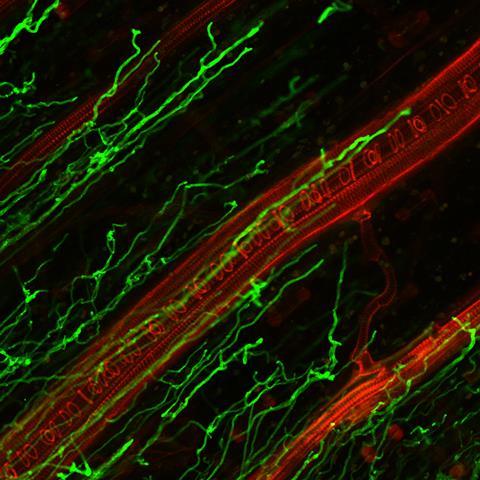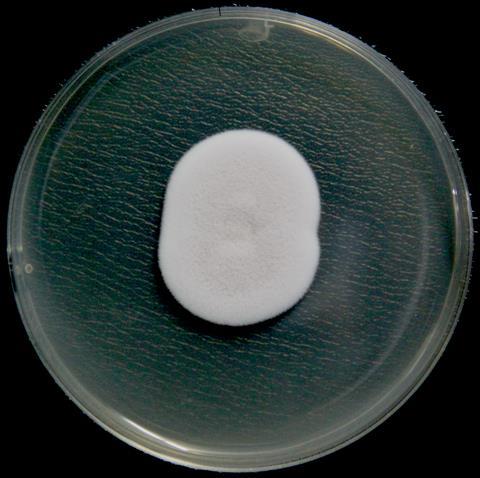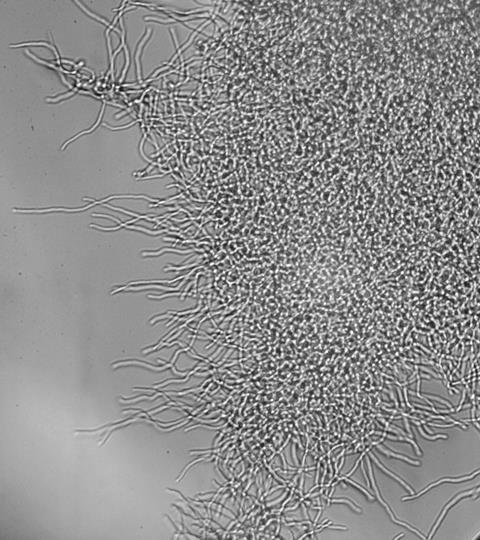A plant-friendly fungus that colonises cereal crops can protect the plants against harmful fungal infestations, a new study in the Journal of Applied Microbiology reveals.

The fungus Purpureocillium lilacinum (YZ1) can act as a beneficial endophyte, systemically colonizing important cereal crops such as maize, millet, sorghum, and wheat to significantly boost plant growth and protect against harmful Fusarium pathogens.
The fungus turns out to have a dual lifestyle, transitioning from a beneficial endophyte within living plant tissues to a saprophytic fungus in senescing and dying plant tissues.
READ MORE: Hidden fungal allies strengthen defenses of black poplars and influence insect interactions
The research was led by Dr Roy Njoroge Kimotho at the University of Chinese Academy of Sciences (UCAS), supported by The Chinese Government Scholarship (CSC) and is published in the paper ‘A Fungal Endophyte Systemically Colonizes Cereal Crops and Confers Protection Against Fusarium Pathogens’ which appears in the Journal of Applied Microbiology [LINK], an Applied Microbiology International publication.
The study was conducted in controlled greenhouse conditions and laboratory facilities at the University of Chinese Academy of Sciences, Center for Agricultural Resources Research, Institute of Genetics and Developmental Biology in Hebei Province, China.
Sustainable alternatives to fungicides
“We undertook this research to find sustainable and effective alternatives to chemical fungicides, which have become environmentally and economically problematic due to pathogen resistance, human and animal health risks, and ecological impacts,” Dr Kimotho said.
“We investigated the beneficial endophytic fungus Purpureocillium lilacinum (YZ1), revealing its capability to colonize important cereal crops (maize, millet, and sorghum), promote plant growth, and suppress major fungal pathogens (Fusarium oxysporum and Fusarium pseudograminearum) in wheat.”

Fungal pathogens, particularly species of the genus Fusarium, represent major threats to cereal crop production globally, causing diseases such as head blight, crown rot and vascular wilt. Chemical fungicides traditionally used for managing these diseases are becoming less effective due to resistance, environmental concerns, and negative impacts on human and health.
Fungal endophyte
This study sought to determine if a natural fungal endophyte could provide a safer, more sustainable alternative to chemical fungicides by enhancing crop growth and protection against Fusarium infections.
The team conducted greenhouse and laboratory experiments using advanced microscopy (scanning electron microscopy and confocal microscopy), growth promotion assays, dual-culture antagonism tests, and chemical analyses (LC-MS) to understand how P. lilacinum YZ1 interacts with maize, millet, wheat, and sorghum.
Their results showed that YZ1 extensively colonizes the roots, stems, and leaves of these cereals without causing disease, while significantly enhancing their growth by increasing biomass, plant height, and grain yield.
Resistant to infection
Importantly, plants colonized by YZ1 were much more resistant to infection by serious pathogens, specifically Fusarium oxysporum and Fusarium pseudograminearum. YZ1 inhibited these pathogens directly, producing various antifungal metabolites identified through LC-MS analyses, and indirectly by strengthening plant tissues.
Furthermore, in controlled greenhouse trials, wheat plants inoculated with YZ1 and subsequently challenged with F. pseudograminearum showed substantially reduced disease symptoms, improved plant health, and increased grain yields compared to plants infected with F. pseudograminearum alone. These observations underscore YZ1’s practical potential as an effective biocontrol agent, capable of significantly mitigating disease impacts under practical agricultural scenarios.

“We were particularly surprised by YZ1’s dual lifestyle, transitioning from a beneficial endophyte within living plant tissues to a saprophytic fungus in senescing and dying plant tissues,” Dr Kimotho admitted. “Such versatility is relatively uncommon among beneficial fungi and suggests a unique adaptive advantage, ensuring nutrient recycling and sustainability within agricultural ecosystems.“
Crop resilience
This work addresses the urgent need for sustainable agricultural practices by providing an alternative to chemical fungicides. The use of YZ1 can enhance cereal productivity, reduce reliance on synthetic agrochemicals, and improve crop resilience against pathogens, ultimately contributing to greater food security and more environmentally friendly agricultural systems.
“Future research should focus on conducting extensive field trials across diverse environments to validate YZ1’s efficacy under field conditions. Additionally, exploring the molecular mechanisms behind YZ1’s beneficial effects and identifying optimal methods for formulation and application will be crucial steps toward practical implementation.”
The research was led by Dr Roy Njoroge Kimotho, with support provided by The Chinese Government Scholarship (CSC) and the University of Chinese Academy of Sciences (UCAS). Roy currently works at the University of California - Riverside as a postdoctoral researcher.
‘A Fungal Endophyte Systemically Colonizes Cereal Crops and Confers Protection Against Fusarium Pathogens’ is published in the Journal of Applied Microbiology [LINK].
Topics
- Agriculture
- Applied Microbiology International
- Asia & Oceania
- cereal crops
- Chinese Academy of Sciences
- Community
- Ecology & Evolution
- endophytes
- Food Security
- Fungi
- Fusarium oxysporum
- Fusarium pseudograminearum
- Healthy Land
- oy Njoroge Kimotho
- Pesticides
- Purpureocillium lilacinum (YZ1)
- Research News
- saprophytic fungi
- Soil & Plant Science
- University of California - Riverside







No comments yet